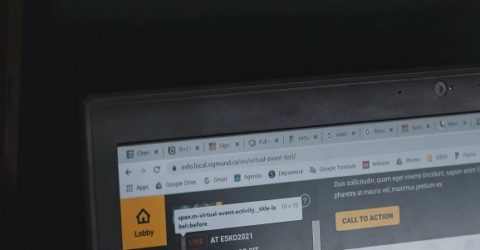What are domain names, and how do I buy one?
Buying domain names might seem intimidating, but it’s actually a straightforward way of reserving a corner of the internet

It’s estimated there are over two billion websites currently live around the world. And every single one of these can be found using a unique domain name.
Ours is BroadbandDeals.co.uk. Our sister site is SimOnlyDeals.co.uk. They’re similar, yet different enough to ensure web browsers don’t confuse them.
The process of buying domain names is surprisingly simple, while a variety of drag-and-drop site building tools have simplified the process of adding content to a registered domain.
But how do you go about buying your own little piece of cyberspace?
Domain offender
The process of buying domain namesstarts with a domain registry, or web hosting company.
They usually have a search tool on their homepage, enabling people to check whether certain domain names have already been registered with specific top level domains (TLDs).
In many cases, a company will have registered companyname.co.uk and companyname.com, but not bothered to register niche TLDs like .biz or .xyz.
There are around 1,500 TLDs in existence, though it’s never a good idea to register a domain name already in widespread use.
Even if amazon.works or amazon.website was available to buy, launching a website at this domain could be regarded as fraudulent or deceitful.
Having found an available domain name, provide payment details and choose how long you want to retain ownership for (typically between one and nine years).
Once the transaction is complete, you own a tiny corner of the internet. There’ll be no content displayed at that address, but you can decide what to populate it with – if anything.
Many addresses aren’t currently in use. These domains are said to be parked, maybe for future adoption or a potential rebranding.
If you want to fill your site with interesting content, the web hosting company you bought the domain name from may offer a proprietary website builder utility.
Graphical editors from platforms like Wix, WordPress or Weebly enable you to publish almost anything on a purchased domain – within reason and the law.
They handle the technical side of designing and publishing. All you have to do is provide them with details of the domain’s ownership, to confirm it’s actually yours.
Sold secure?
There are some privacy factors to consider when buying domain names.
Firstly, your name will be added as the registrant of the domain name on the global WHOIS database. This ensures site issues can be directed to a named individual.
If you’d rather keep your name off the internet, domain privacy protection represents a viable workaround.
Many domain registrars can substitute a proxy’s details for yours on request. You’ll still be contacted about issues relating to your site, but those contact details won’t be made public.
Secondly, it’s incumbent on you to maintain a registered domain name – not just renewing ownership, but ensuring it doesn’t end up hosting inappropriate content.
This includes link farms, embedded malware and other unwholesome content which may be added accidentally – or without your knowledge.
It’s vitally important to choose a reputable web hosting partner. Look at Trustpilot and Google reviews to ensure a prospective company handles customer domains professionally.
Finally, bear in mind a lapsed domain name will go back on general sale. Anyone else could then acquire it, and you’ll have no control over what they choose to use it for.
This is why it’s important to whitelist emails from domain registries, set reminders to renew domains which don’t do so automatically, and keep payment details up to date.






